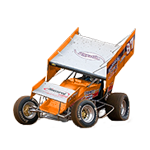- Home
- Illustrator
- Discussions
- Re: Can I isolate the wood grain from an image and...
- Re: Can I isolate the wood grain from an image and...
Can I isolate the wood grain from an image and turn it into a realistic vector?
Copy link to clipboard
Copied
Hello,
We work with a large Vanguard printer that prints on virtually any kind of surface and can create depth, etc.
I'm attempting to take the wood grain from either a hi-res scanned image of wood, or a photo, and vectorize only the wood grain. The trick is to keep it realistic and be able to apply to any printed image.
Any suggestions on how to go about it? I've attempted image trace and adjusted the settings, etc., but the vector looks unrealistic.
I've attached a jpg and a pdf of a hi-res scan of wood for reference.
I would greatly appreciate your insight!
Thanks,
Justin
Explore related tutorials & articles
Copy link to clipboard
Copied
It's pretty difficult to make a vector-based wood grain texture that looks realistic and is practical to edit and print. Realistic wood grain is really complex. I've done a few things with simulated wood grain textures, but I've gone in the opposite direction, making the textures more graphical looking. I'd start out in Photoshop with an old AlienSkin Eye Candy plugin to create a pixel-based wood grain texture. Then I would manipulate the results into something that could generate good selections and work paths. The results aren't photo-realistic at all; it's very stylized. But the line work is clean, more simple and not likely to be rejected by a large format RIP application (due to the objects having way too many anchor points, among other issues).
You mentioned your printer can create depth. Does that mean it can build up a 3D relief effect on the material? Does it only work with vector-based content? If I was going to build up a wood grain texture in an image and wanted it realistic looking I'd probably just use a high resolution, pixel-based photo as a source. Then I would either use alpha channels and/or blending modes to incorporate that texture into an image to be printed.
Copy link to clipboard
Copied
Thanks for your insight, Bobby!
You are definitley talk my "new" language as I am learning about this process.
You are correct in thinking that the printer build up a 3D relief effect on the material. I'll have to loo into the plugin you mentioned and see what we can produce.
If using a raster image, then we would be limited in what we could do with the brightness, contrast, and vibrance between the grain and the "background" of the wood itself.
In other words, if we want the grain to be a bit darker and the background lighter, we would be limited in the options – especially if we are thinking of color change.
Would you agree?
Thanks!
Copy link to clipboard
Copied
I'm not sure I would agree.
I get your line of thinking that isolating the grain as a vector overlay of sorts would open up unlimited possibilities. In a simple sense it's true, but a skilled Photoshop practitioner might be able to do even more with a good raster image using channel operations, hue/sat/curves/levels adjustments, blend modes, etc. If the printer can do its trick with a raster image, there's a lot more potential for realistic, organic-looking results than there is with the inevitable over-simplification you'll get with a vectorized grain.
Copy link to clipboard
Copied
Great thoughts, John.
That is definitley worth exploring. I like what you said about using the differnet channels.
The printer starts printing at 600 ppi, so I will be dealing with some extremely large files.
I'll have to follow up to this thread once I make some progress.
Thanks for your time and suggestions!
Copy link to clipboard
Copied
Obviously it would be a good idea to run some test prints on small pieces of material if possible. Is your printer a flatbed type model? We have a Mimaki UV flatbed printer in one part of our shop. It can't do any 3D relief printing though.
Copy link to clipboard
Copied
I agree. Our printer is a Vanguard 300D-HS ( https://vanguarddigital.com/digital-printers/vk300d-hs/ ).
Your printer sounds similar since the ours is flatbed and does not provide relief printing.
Find more inspiration, events, and resources on the new Adobe Community
Explore Now